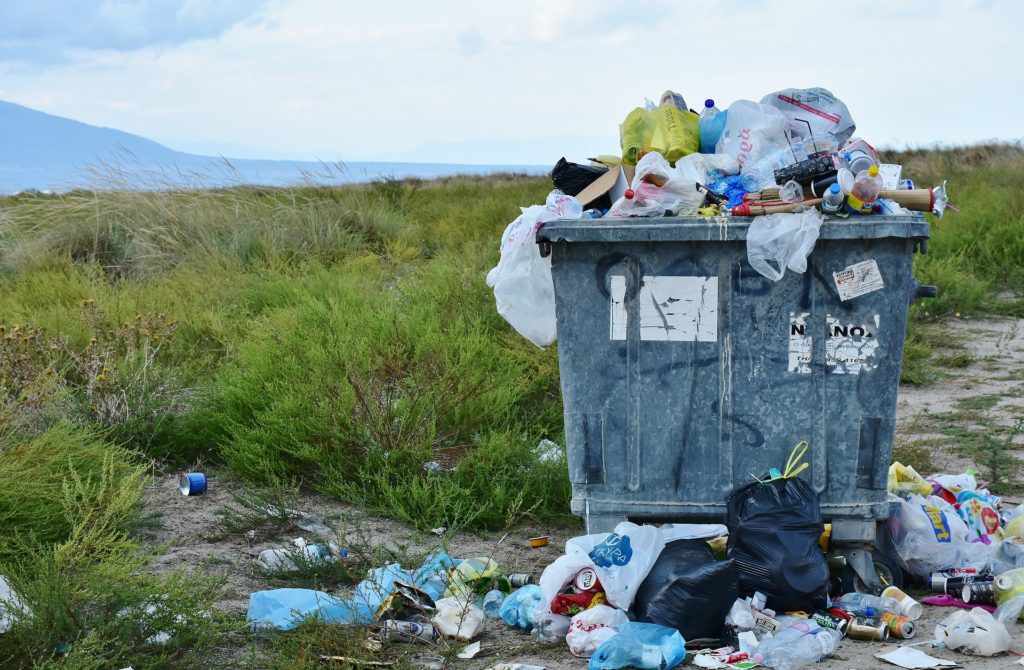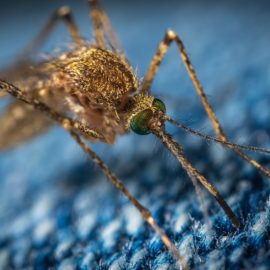
If you are seeing more litter your are seeing right. There is more and not just from the parades.
Jefferson Parish Parkways clean-up crew leader Brian Joseph was plucking the last scraps of litter off the grassy expanse along Cleearview Parkway on a recent Thursday morning when a garbage truck rounded the corner, a black bag of trash on the roof of its cab. The bag stayed in place as it passed the area Joseph spent three hours cleaning, but there was little doubt it would soon fall to the ground and scatter its contents along the street. “With the wind blowing, that will topple over and spread everywhere,” Joseph said matter-of-factly. Louisiana has always had a well-earned reputation for litter. But Joseph and other officials say the problem got considerably worse during the pandemic and was exacerbated further by Hurricane Ida.
nola.com
We ate more take out so more trash. Our habits changes.
Changes in consumption habits over the last two years, from an increase in take-out food containers to a surge in online shopping, have only added to the trash already generated by an overreliance on single-use plastic bags, cups, straws and utensils. Meanwhile, staffing at the city and parish level, already outmatched by the litter problem in many cases, has suffered due to budget cutbacks, government officials say. To Joseph and Bryan Parks, the head of Jefferson’s parkways department, the problem seems never-ending. “I don’t want to sound like I’m complaining about it; we’re not,” Parks said. “We’re gonna pick it up; we’re gonna do our job. But the average person driving by doesn’t realize the scale of everything we do. And we’re not (even) stopping it, we’re just chasing it.”
Staffing levels also impacted with the layoffs.
The use of inmate clean-up crews, which in Louisiana have traditionally been a backbone of clean-up efforts, have also dropped off during the pandemic, officials said. Hurricane Ida, meanwhile, generated a monstrous amount of storm and construction debris, fueling freelance trash hauling, overstuffing garbage trucks and further taxing municipal trash collection efforts throughout the metro area. “I don’t think you can understate the impact these back-to-back natural disasters have had on the cleanliness of our communities,” said Susan Russell, executive director of Keep Louisiana Beautiful. But state and local officials have been ramping up their efforts, and the fight against litter got a boost in January when Gov. John Bel Edwards directed a statewide task force to come up with recommendations to curb the problem by July. Edwards has also asked the Legislature for another $1.5 million a year on top of the current $40 million budget for anti-litter initiatives. Those efforts have been moved under the office of Lt. Governor Billy Nungesser, who has begun meeting with nforcementlocal governments across the state.
Enforcement, where is it and how is it to work?
Dawn Hebert, president of Keep New Orleans Beautiful, said a key problem at the local level is a lack of enforcement of existing laws, which allows individuals, businesses and apartment complexes to litter with impunity. As it stands today, “the city won’t scoop (litter) up if it’s loose on the ground, it sits there until some good Samaritan decides, ‘I’m going to clean this up because I’m tired of looking at it,” she said. New Orleans officials agree that enforcement has been a challenge, but say they’re working to rectify that problem. The City Council passed an ordinance in December to allow the administration to deputize sanitation employees to cite chronic litterers, said Jonathan Wisbey, the head of a team Mayor LaToya Cantrell has tasked with tackling litter abatement. That’s needed because the understaffed New Orleans Police Department has struggled to enforce anti-litter laws, he said. Another recent change allows drop-off dump sites to be located outside of industrially zoned areas, offering more options to people looking to drop off their trash. There are no plans to open those sites next to residences, Wisbey said. The city is also working to improve its systems for tracking litter offenses and issuing warnings, fines and summonses to problem businesses and residents. Importantly, New Orleans dedicated $900,000 in federal pandemic aid last year toward clearing illegal dump sites. Like with enforcement, “none of this works if the city doesn’t do its job and put its money where its mouth is,” Wisbey said. Wisbey said the city’s small litter abatement team could expand if other changes prove effective. As it stands, there are five “sanitation ranger” positions citywide, and only three of those jobs are currently filled.
Garbage pickup also adds garbage to the streets as there is usually pieces of litter left after the garbage is picked up.
In Jefferson, Parish President Cynthia Lee Sheng said the litter problem has strained a parks department already suffering from a staffing shortage. The parkways department, which handles litter clean up, is down about 10 people from the pre-pandemic level of 45 positions. Between 7 and ten government staffers handle litter across the parish, while the West Bank Expressway from Terrytown to the bridge is handled by the parish’s grass contractor, who fills an average of 100 bags of litter every three days. Lee Sheng said she’s constantly hopping out of her car and taking pictures of problem spots to send to the parkways department. Another issue is the litter that blows out of unsecured trucks that haul garbage along parish thoroughfares, often to one of the three landfills in Waggaman, just before the St. Charles Parish line. To keep up with the post-Ida glut of trash and debris, trash haulers have been overstuffing their trucks and using every available vehicle, including some without the proper netting to secure loads. While problem spots like the one along the I-10 service road near Bonnabel Boulevard could be caused by any kind of vehicle, the road out to the landfills gets a steady buildup of litter, which the parish considers a telltale sign that garbage trucks are a big part of the problem. Parks, the parkways director, said even empty garbage trucks leaving the dump can have pieces of plastic and trash blowing out of them. “We’ve got a small portion of the population that doesn’t know to take the trash home and dispose of it properly, but there’s no way it’s (responsible for) the volume we see in some areas,” Parks said. “We feel pretty strongly it’s not people throwing stuff out of their vehicle.” Lee Sheng met with the Louisiana State Police in December to discuss cracking down on the trucks that drop litter along state highways, she said. She also plans to meet with the parish’s garbage contractors this month about that problem, and has talked with the parish’s court system and Jefferson Juvenile Services about tapping residents ordered to do community service to clean up the mess, she said.
The problem is bigger than us as individuates and sometimes bigger than the government.
Russell, of Keep Louisiana Beautiful, said that although the problem is much greater than just individuals throwing wrappers on the ground, individual littering becomes magnified when trash is so prevalent. Similarly, lax enforcement and poor maintenance of infrastructure send the signal that it doesn’t matter if another piece of litter hits the ground. Russell, who is a member of Edwards’ task force, said Louisiana needs a comprehensive approach that is permanently funded, holds people and businesses accountable, and provides local governments with clear guidance on policies and standards. While clean-up efforts are important, “you have to be doing it as part of an overall preventative strategy,” Russell said. “Doing that without doing the other things is a losing battle.”
It is up to us, both to pick up litter in from of our houses and sponsor pickups in the neighborhood.



